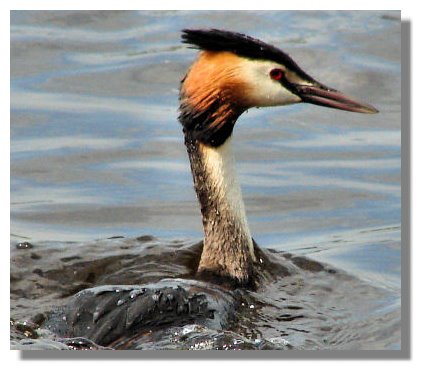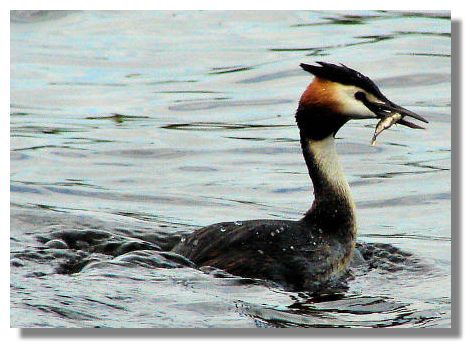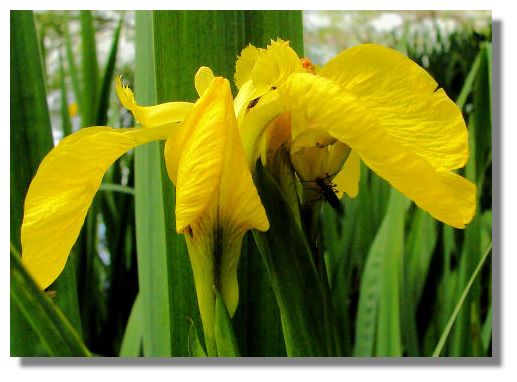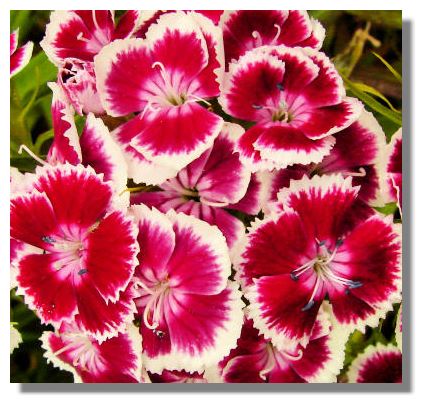Each week the Rampant Scotland Newsletter includes a number of photographs which illustrate the weather and the seasons, plus the flora and fauna of the current week around Scotland. This separate "colour supplement" displays some more pictures, in a larger format. Here is this week's crop of Scottish views!
The Great Crested Grebe is normally a very shy bird, so getting close to them to get a sharp picture is often very difficult. On this occasion, the bird was near the shore of a small loch at Drumpellier Country Park. Even though it started to head away, I was able to get this clear shot.
Surprisingly, after a successful under-water dive to catch a fish, the Grebe re-appeared, close in shore. The Grebe may have been saying "Gotcha" - but so was I...
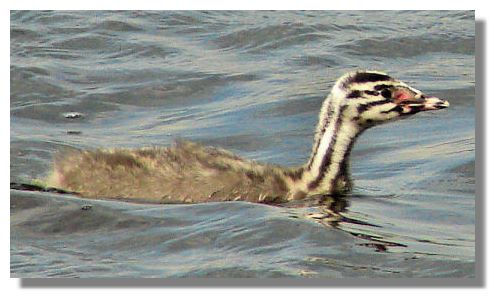
The reason for the Grebe being more intent on catching fish rather than steering clear of any potential danger, soon became clear when its chicks came rushing across the water. Many young birds noisily make their presence known to encourage their parents to bring them food. But the baby Grebes must be the loudest around - they can be heard far across the loch.
This yellow wild iris was growing at the edge of the Swan Pond at Culzean Castle Country Park.
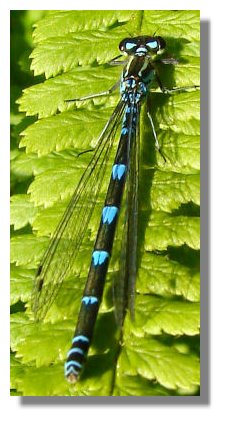
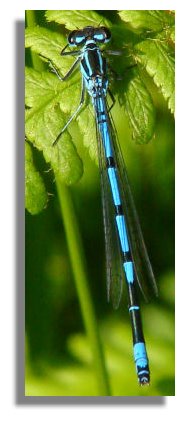
Culzean Castle Country Park has a number of small, secluded ponds where damselflies and dragonflies can often be seen at this time of year. Seen close up, these insects sometimes look a bit "scary" but their coloured markings can often be very attractive. The picture on the left (on most browsers) is a female Variable Damselfly. It is not often found in Scotland, but is quite widespread in Ireland and this one may have been blown across the North Channel to Culzean in south-west Scotland. The second dragonfly on the right is a male "Common Blue" which, as the name suggests, is often to be seen in Scotland and the rest of the UK.
"Sweet William" (Dianthus barbatus and also nicknamed as "Indian Carpet") comes in many different colours and the walled garden at Culzean had a number of them on display this year. The plant is said to have got its name from the Duke of Cumberland (Butcher Cumberland to the Jacobites, after their harsh treatment after the uprising in 1745/46). As a result, it is sometimes known in Scotland as "Stinking Billy".
If you want to look back at earlier editions of this Colour Supplement, there is an Index Page
